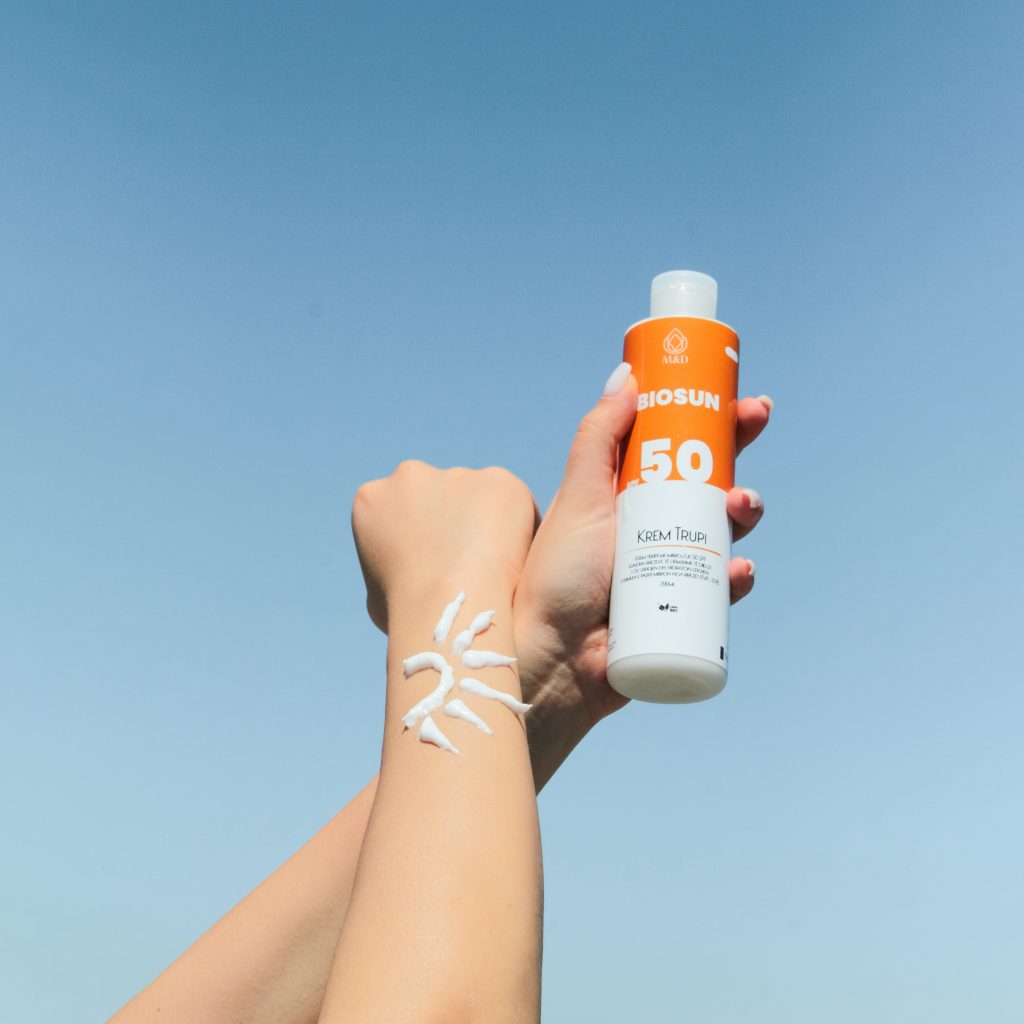With summer in full swing, it’s time to bring out the summertime essentials — swimsuits, pool noodles, bug spray, and, of course, sunscreen!
If your sunscreen is past its three-year shelf life, you may be overdue for a sunscreen shopping spree. Not sure where to start? Before the sheer selection overwhelms you, take a look at our handy guide to all things sunscreen.
Why is Sunscreen Important?
It’s tempting to skip the sunscreen routine, especially when you’re just taking the kids to the playground for a few hours — after all, how important is sunscreen anyway? As it turns out, using sunscreen on a daily basis decreases your chance of developing skin cancer between 40-50%.
Sunscreen protects the skin from ultraviolet radiation, also known as UV rays. The two main types of UV rays are ultraviolet A (UVA) and ultraviolet B (UVB). Ultraviolet B rays reach the outer layer of the skin and can cause superficial damage, such as sunburns. Ultraviolet A rays, on the other hand, penetrate as far as the dermis because of their longer wavelength, ultimately causing greater damage to the skin.
The two types of sunscreen used to combat UV rays and potential skin damage are chemical sunscreen and mineral sunscreen. Chemical sunscreen is commonly referred to as a “chemical blocker,” while mineral sunscreen is described as a “physical blocker.” Wondering how to choose sunscreen for your family? We’ll break down the details for you.
Chemical Sunscreen
Chemical sunscreen soaks into your skin and absorbs UV rays, converts the rays into heat, and then releases the heat from your skin. Because chemical sunscreen usually takes around 20 minutes to work effectively, it may not be the best option for spontaneous trips to the pool or last-minute outings. Like all sunscreens, chemical sunscreens gradually wear off, and re-application is necessary every one to two hours.
Chemical sunscreen is also known to clog pores, which is problematic for those with sensitive or acne-prone skin. Because of its heat-trapping and releasing nature, chemical sunscreens are also known to exacerbate dark spots on the skin and worsen hyperpigmentation.
Unsurprisingly, chemical sunscreen is close to invisible after it is applied. Chemical sunscreen also has a thinner consistency and is easier to spread than most mineral sunscreens.
Common ingredients in chemical sunscreens include oxybenzone, avobenzone, aminobenzoic acid, octinoxate, octocrylene, octisalate, and homosalate.
Ideal for:
- Children and adults
- Those with non-sensitive skin
Best used for:
- Planned outings and day trips
Mineral Sunscreen
Unlike chemical sunscreens, mineral sunscreens sit on the surface of the skin and reflect UV rays, rather than absorbing and releasing them. If you’re taking a quick trip to the pool, not to worry — mineral sunscreens are effective as soon as they are applied. However, because mineral sunscreens are easily rinsed or rubbed off, frequent re-application is necessary. Not to mention, most mineral sunscreens have a pasty, white-ish tint, which is often visible on the skin after application. For those with sensitive or acne-prone skin, mineral sunscreen is the best alternative to chemical sunscreen.
Common ingredients in mineral sunscreen include titanium dioxide and zinc dioxide.
Ideal for:
- Teenagers
- Those with sensitive skin
Best used for:
- Spontaneous trips or outdoor activities
What do SPF Numbers Mean?
Chemical vs. mineral isn’t the only thing to consider when you choose sunscreen for your family. Sun Protection Factor, commonly referred to as SPF, indicates how well sunscreen products protect the skin against UVB rays and sunburn. An SPF of 15 protects against 93% of UVB rays, while SPF 30 filters 97% of UVB rays. SPF 50 offers the most coverage, filtering 98% of UVB rays.
SPF does not measure how well sunscreens protect against UVA rays, though; be sure to use broad spectrum sunscreens, which combat exposure to both UVA and UVB rays.
Sunscreen Formats
Sunscreen comes in a variety of sprays, lotions, sticks, and oils. No sunscreen is one-size-fits-all, especially depending on your children’s ages or preferences. When you choose sunscreen for your family, these are the types you might consider.
Sprays
Sprays are the most convenient and popular option and take only a few minutes to apply. Both chemical and mineral sunscreens are available as sprays, but it’s hard to tell if they provide adequate coverage. Be careful to avoid inhaling sprays, and avoid applying spray to your face or around the mouth area.
Lotions and Creams
Lotions are more time-consuming to apply, but provide better coverage than sprays. Although sunscreen lotion offers better hydration, it sometimes leaves the skin feeling sticky or greasy. For infants or squirmy toddlers, lotions are ideal for the face and neck area. Many makeup products also offer SPF coverage, which is a great option for moms-on-the-go.
Sticks
Sunscreen sticks are small and compact — perfect to stash away in a summer tote! Sticks are also a great back-up option in case you forget your usual sunscreen essentials. If you’re running low on sunscreen lotion, sticks are safe to apply to the face and around the mouth area.
Oils
Sunscreen oils are made up of ingredients ranging from shea butter to coconut oil and are growing in popularity. Most sunscreen oils are water-resistant for up to 80 minutes. Although oils take longer to dry, they leave the skin feeling hydrated and glowing.
Wherever your summer adventures take you, don’t forget to soak up the sun and soak in the sunscreen! No matter what sunscreen you choose for your family, the best kind is the kind they’ll wear. Taking just a few, preventative measures will help your children establish good skincare habits and teach them to protect their skin as they grow older. Happy summer!
For more tips on how to stay safe this summer, click here.
WORDS: AVERY THOMAS

